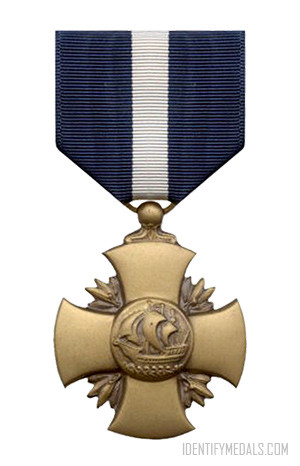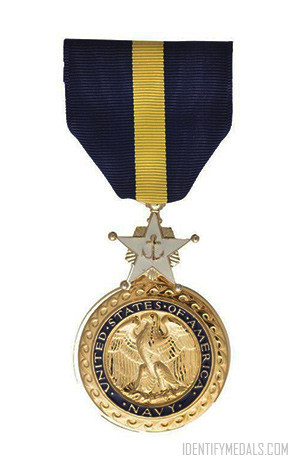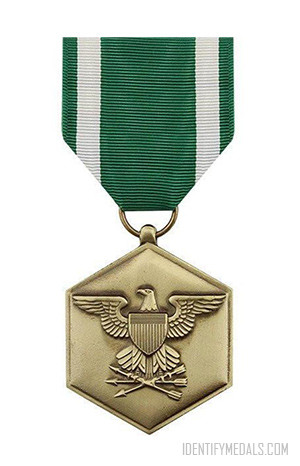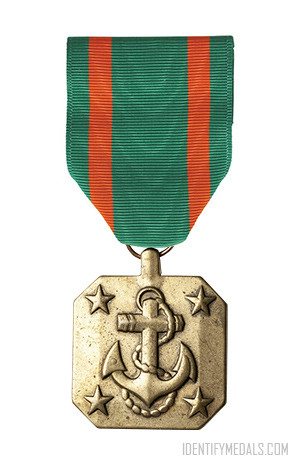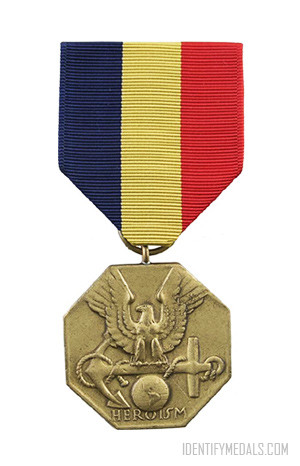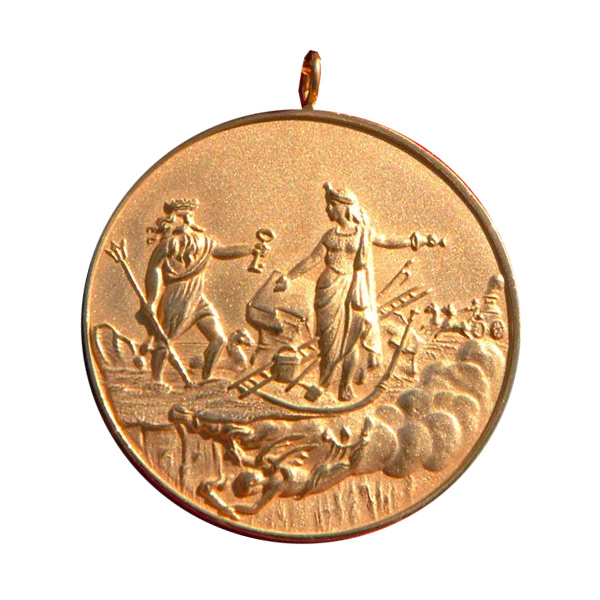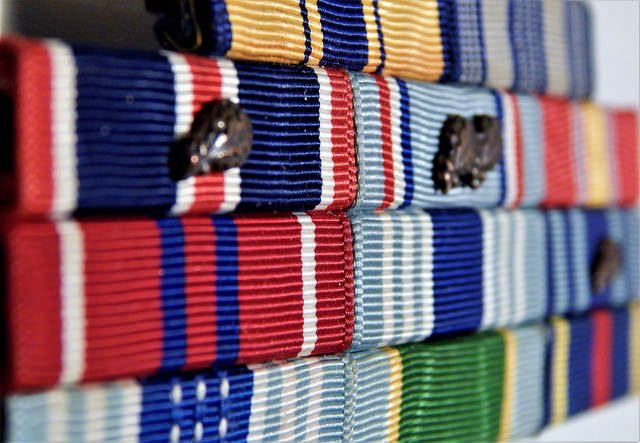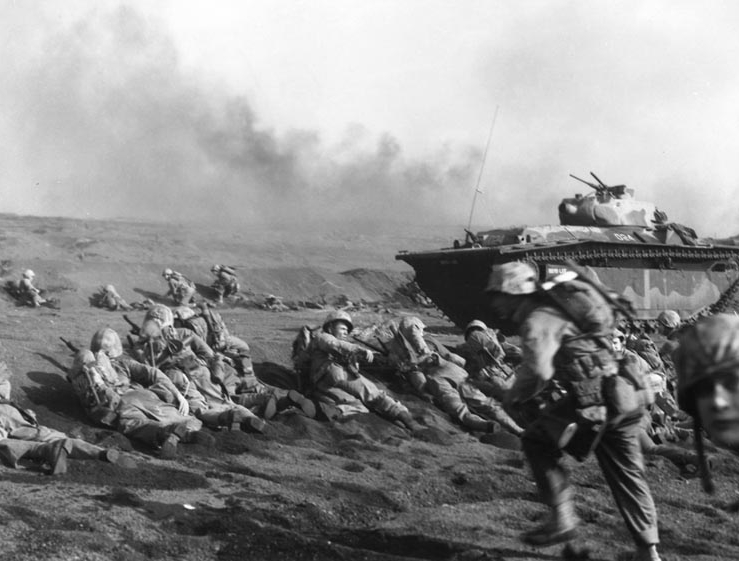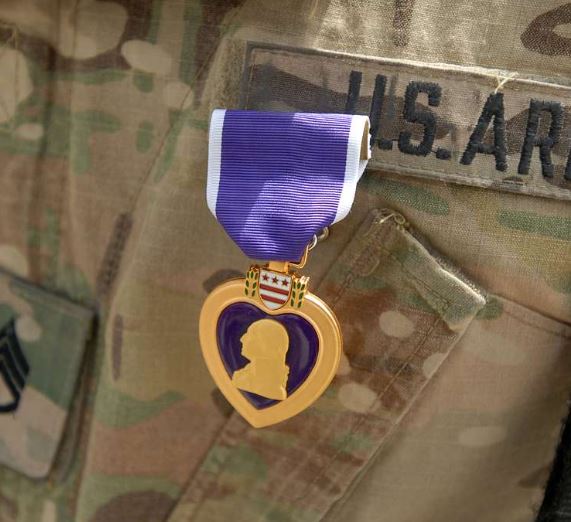We all know the reputation of the Marine Corps as the toughest branch of the service, but there’s a good chance that unless you’re a Marine or you’re married to a Marine, you don’t know much about Marine Corps medals. But I’m going to change that today, as I give you a quick look at the medals our toughest service members receive.
There are several combat awards that are specifically awarded to individuals serving with the U.S. Navy and U.S. Marine Corps only. These include the Navy Cross Medal, the Navy Distinguished Service Medal, the Navy/Marine Corps Commendation Medal and the Navy/Marine Corps Achievement Medal. The Combat Distinguishing Device may be authorized for latter two medals.
Navy Cross Medal
Just one step below the Medal of Honor, the Navy Cross Medal is awarded to individuals who have distinguished themselves by extraordinary heroism while serving with the Navy or Marine Corps. Because the Navy Cross Medal is a distinctive decoration, it is only awarded for acts performed in the presence of great danger or at great personal risk.
In order to receive the medal, they must demonstrate extraordinary heroism in one of three situations:
- While engaged in an action against an enemy of the United States;
- While engaged in military operations involving conflict with an opposing foreign force;
- While serving with friendly foreign forces engaged in an armed conflict against an opposing armed force, in which the United States is not a belligerent party.
Navy Distinguished Service Medal
Slightly lower than the Navy Cross but just above the Silver Star Medal is the Navy Distinguished Service Medal. The Distinguished Service Medal is awarded to individuals who display exceptionally meritorious service to the United States in a duty of great responsibility.
Generally, the medal is just awarded to officers in principal commands at sea or in the field who have gone clearly above normal expectations and contributed to the success of a major command or project. As the requirements note, “If there is any doubt as to the degree of service involved, the Legion of Merit [a slightly lower award] is the more appropriate award.”
Navy/Marine Corps Commendation Medal
Awarded for acts since December 6, 1941, the Navy/Marine Corps Commendation Medal is a mid-level medal awarded to individuals who have distinguished themselves while serving with the U.S. naval service.
To receive the Navy/Marine Corps Commendation Medal, individuals must have demonstrated one of three characteristics:
- Acts of Heroism that merit special recognition but in not to the degree necessary for a Bronze Star Medal (combat) or for the Navy and Marine Corps Medal (non-combat)
- Meritorious Achievement that is outstanding and deserves to be recognized as it is a definite contribution to the naval service, yet is not to the level of a Bronze Star Medal or Air Medal (combat) or Meritorious Service Medal or Air Medal (non-combat)
- Meritorious Service that is above and beyond what is usually expected of an individual at a particular grade and rate and can be demonstrated in the individual’s fitness report or personnel records, yet is not to the level of a Bronze Star Medal or Air Medal (combat) or Meritorious Service Medal or Air Medal (non-combat)
Navy/Marine Corps Achievement Medal
Originally established on May 1, 1961, the Navy/Marine Corps Achievement Medal was first a ribbon-only award. The current military medal was authorized by the Secretary of the Navy on July 17, 1967.
It is lower than the Commendation Medal and is awarded to members of the U.S. Navy and U.S. Marine Corps or members of the armed forces of a friendly foreign nation that meet the eligibility requirements.
The Achievement Medal is given for meritorious service or achievement in combat or non-combat situations where such actions merit more recognition than a fitness report but do not warrant a Navy/Marine Corps Commendation Medal or higher. Additionally, the Achievement Medal may be awarded to members of the reserves that are junior officers or enlisted personnel.
Designed by the Institute of Heraldry, the medal is a bronze square with clipped corners featuring a fouled anchor in the center. There are stars in each of the four corners. The back of the medal is blank so that the recipient’s name can be engraved, and the ribbon is myrtle green with stripers of orange near each edge. Additional awards are denoted by gold stars, and a Combat Distinguishing Device (Combat “V”) may be authorized.
To receive an Achievement Medal, individuals must demonstrate one of two characteristics:
- Professional achievement that clearly exceed the normal requirements and expectations given the individual’s grade and experience and be an important contribution that benefits the United States and the naval service
- Leadership achievement that is noteworthy, sustained or of such merit to earn singular recognition of the act(s), reflect well on the individual’s effort to accomplish the unit mission
While both medals—Commendation Medal and Achievement Medal—can also be given for non-combat situations, the Navy and Marine Corps also has a medal just for non-combat acts, the Navy and Marine Corps Medal.
Navy and Marine Corps Medal
Each branch of the service has its highest non-combat decoration. For the Army, it’s the Soldier’s Medal. For the Air Force, it’s the Airman’s Medal. For the Coast Guard, it’s the Coast Guard Medal. And for the Marines, it’s the Navy and Marine Corps Medal.
Established by an act of Congress on August 7, 1942 and first awarded during World War II, the Navy and Marine Corps Medal is a decoration higher than the Bronze Star Medal and is presented for heroism not involving conflict with the enemy to members of the U.S. Navy and U.S. Marine Corps.
If you’re curious about the order of precedence for Marine Corps medals and ribbons, you can visit this site that places the ribbons in order of precedence. In addition, you can also click on each ribbon to learn more about it.
Hopefully, now you know just a bit more about what awards those serving with the U.S. Navy or U.S. Marine Corps can receive through our short look at Marine Corps Medals!
Sources:
- https://valor.militarytimes.com/award/19
- https://www.marines.mil/Marines/Combat-Awards/
- https://www.medalsofamerica.com/blog/marine-corps-achievement-medal/
Guest Contributor: Rachel Basinger is a former history teacher turned freelance writer and editor. She loves studying military history, especially the World Wars, and of course military medals. She has authored three history books for young adults and transcribed interviews of World War II veterans. In her free time, Rachel is a voracious reader and is a runner who completed her first half marathon in May 2019.


